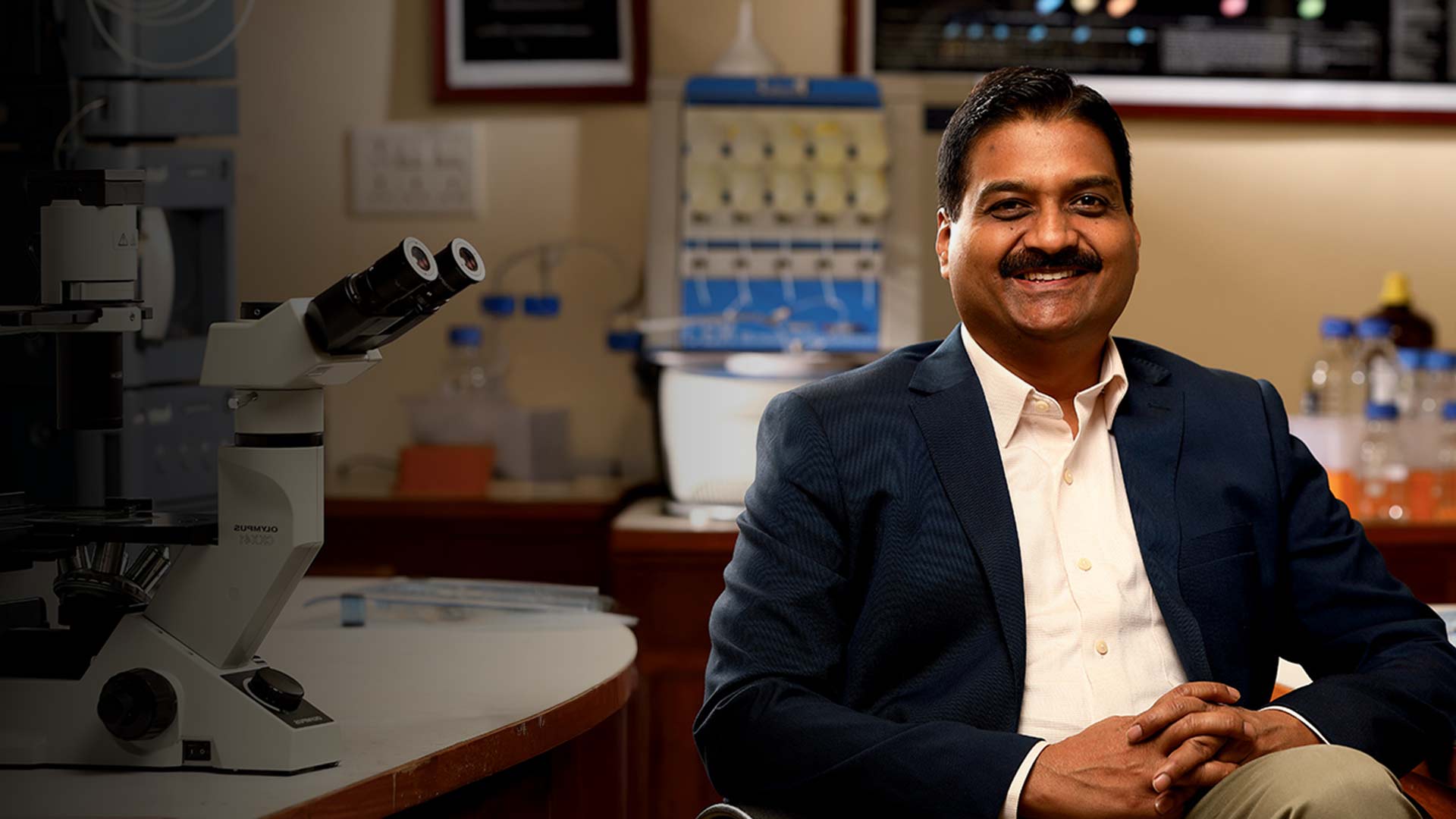
In Conversation with G. Mugesh
Shreshta Manikandan
25 June, 2025
Prof. G Mugesh won the 2019 Infosys Prize in Physical Sciences for his seminal work in the chemical synthesis of small molecules and nanomaterials for biomedical applications. In this exclusive interview, he talks about his latest work- synthesis of a nanozyme which can help prevent blood clotting.
1) Your work bridges chemistry and biology in fascinating ways. What inspired you to take up interdisciplinary research?
I am based from a chemistry background. I did my PhD in chemistry and used to work in organo-metallic chemistry. It was when I went to Germany as a post-doc that I started working on problems related to biology. I visited the lab of Helmut Sies (German physician and biochemist), who is considered as a redox pioneer and has done work in the field of oxidative stress and functioning of redox modulators. His work inspired me to pick up biology along the way. To address something interesting and challenging, I believe working at interphases will be helpful. In a similar way, several problems of biology require the basic knowledge of chemistry and this is what paved the way to what I am working on today.
2) What inspired you and your team to explore nanozymes as a solution for abnormal blood clotting?
We have been working on small molecules for several years. Around 2014 was when the biological application of nanomaterials began to emerge. We were interested to make our own nanomaterials. After several discussions, we concluded that we wanted something that was redox active; something which can be used to control the redox processes inside the mammalian cells. Once this basic framework was set, we started studying various nanomaterials to identify their redox properties. We landed upon vanadium pentoxide (V2O5) and found out that it mimics an enzyme called glutathione peroxidase. It reduces oxidative stress of the cells and uses Selenocysteine (an amino acid) in its active site. The only condition was that the nanozyme created by us should not show toxicity inside the cells. Via synthesis, we were able to modify the nanomaterial’s size, shape, and their redox properties. Vanadium pentoxide is an oxidant which is used in several oxidation reactions in chemistry but to make it an anti-oxidant, we had to completely alter its properties and bring it to its nano form. This is how we began using nanozymes (nanomaterials functioning as enzymes).
3) What were some challenges faced by you and your team while synthesising the nanozymes, particularly in ensuring the correct oxidation state of vanadium?
Vanadium is a metal which exhibits a range of oxidation states and in the case of V2O5, it is essential to maintain its oxidation state at +5. At the same time, we must ensure it does not change its state to +3 or +4 inside the cells. Such a change may lead to the production of reactive oxygen species (ROS) instead of scavenging reactive oxygen species. Essentially, ROS are molecules which contain oxygen that are highly reactive whereas scavenging ROS help to prevent oxidative damage by removing or neutralising ROS from a biological system. The specific +5 oxidation state of vanadium can be achieved by modifying the synthesis and these reactions happen on the surface of the nanomaterials. Here, hydrogen peroxide present in the cells react with the vanadium and perform a catalytic activity mimicking the enzyme glutathione peroxidase. Obtaining a material which is non-toxic and beneficial under oxidative conditions was the biggest challenge.
4) How do you see the field of nanozyme technology evolving in medicine beyond blood clot prevention?
I believe that nanomedicine is emerging as an alternative to medicine for several diseases. In the case of cancer, nanomaterials are being tested as anti-cancer agents. Nanomaterials can also be used to prevent neurodegenerative diseases such as Alzheimer’s and Parkinson’s, which are associated with the increase in ROS. For diseases which originate from the uncontrolled production of ROS and the subsequent oxidative stress, nanozymes will be useful. Apart from this, cardiovascular diseases also make use of nanozyme technology and of course, blood clot prevention as shown by us. The nanomaterials, as the word suggests, are very tiny and can be easily taken up by the cells using certain mechanisms. Hence it finds an application across various fields of medicine.
5) How do you see the future of Chemical Biology evolving in India? What roles do you think the Government can play in the same?
Chemical biology as a field has been existent for quite a long time but with the progression of inter-disciplinary research, it is becoming a popular choice among young researchers. Earlier, we had been studying about biological systems and its functioning but now, research is moving towards regulation of biological systems. This will be of tremendous use in therapeutics as well. On the other hand, there are a few challenges as well. One loses their identity; chemists think they are biologists and vice-versa.
I believe the training should commence early on, just as one finishes their post-doc. Funding is also a rising matter of concern in the present day. Students should equip themselves with the required knowledge and expertise as this is an interphase of two different branches of science.
6) What is one piece of advice you would like to give students who wish to take up this field or research in general?
Always follow your passion and develop a curiosity to learn new things. Demonstrate your interest towards the field or subject of choice. Never give up- the best is waiting for you!
